What are the cheapest cars to insure for a 17-year-old?
The cheapest cars to insure for a 17-year-old in 2025 are small hatchbacks and city cars with 1.0-litre or smaller engines, simple trims, and strong safety ratings.
Insurance costs for young drivers are notoriously high. At 17, most motorists have no driving history, are considered the riskiest group on the road, and face average annual premiums well above £1,500. Yet the car you choose can make a significant difference to how much you pay.
A Fiat 500, for example, often carries an average premium of around £1,610, while the same driver in a Volkswagen Polo might be looking at closer to £2,000. This difference isn’t arbitrary: insurers reward cars that are easier to repair, less powerful, and safer in accidents.
That’s why models like the Hyundai i10, Toyota Aygo, and Peugeot 108 consistently appear at the top of “cheapest to insure” lists. They strike a balance between low running costs, sensible styling, and proven safety. Parents see them as practical starter cars, while insurers see them as lower-risk bets.
If you’re considering your first car in 2025, this guide highlights the most affordable options, explains the mechanics behind insurance pricing, and offers practical tips to bring premiums down even further.
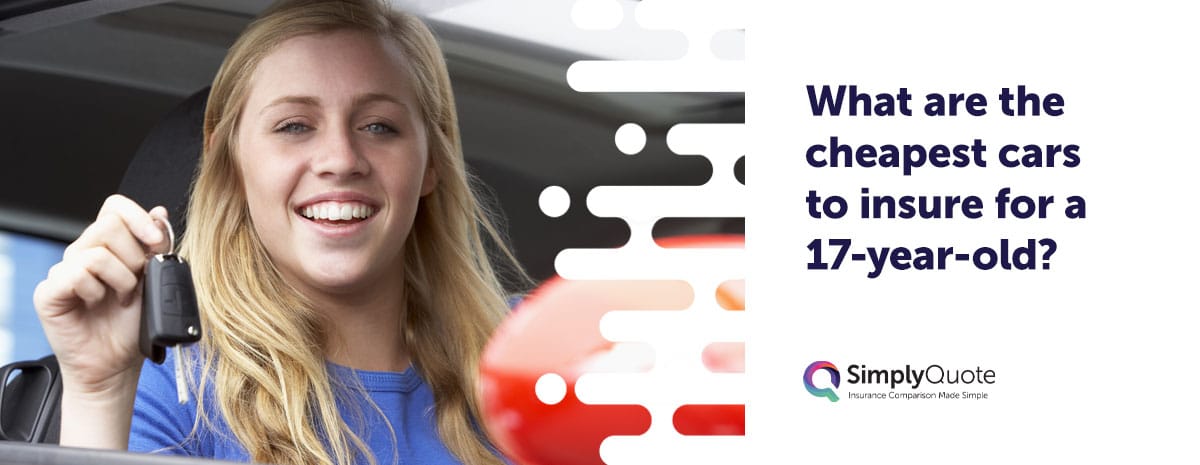
What cars are cheapest to insure for a 17-year-old in 2025?
The cheapest cars to insure for 17-year-olds in 2025 are small hatchbacks and city cars like the Fiat 500, Hyundai i10, Volkswagen Polo, Toyota Aygo, Peugeot 108, and Kia Picanto, all sitting in the lowest UK insurance groups.
For a first-time driver, the choice of car is often the biggest factor shaping the cost of cover. Insurers reward vehicles with modest engines, low repair bills, and strong safety credentials. These “insurance group 1 cars” are designed with affordability in mind, and that translates directly into cheaper first car insurance for young drivers.
Here’s a closer look at the standout models for 2025:
Fiat 500
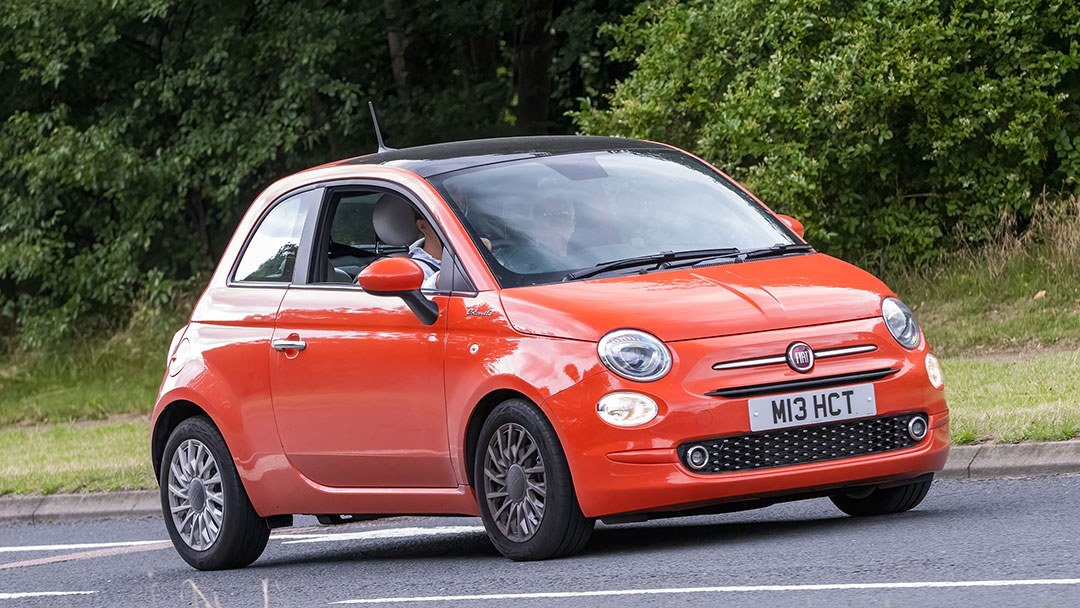
Regularly the outright cheapest to insure, with average premiums around £1,610. Its compact frame, stylish design, and low running costs make it a favourite among learners and parents searching for a cheap first car.
Hyundai i10
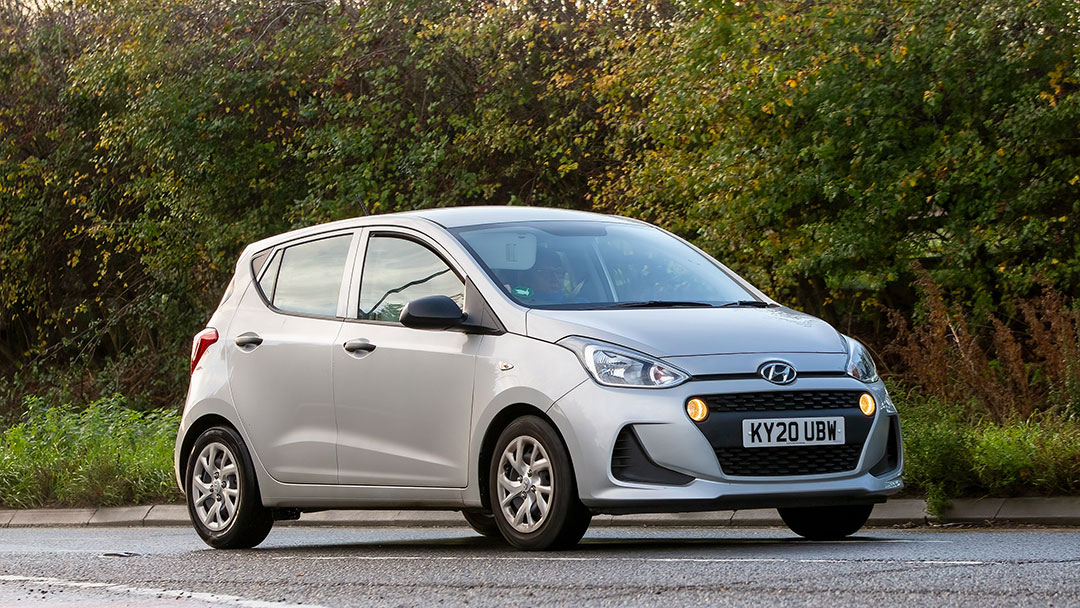
Insurance group 1 with the 1.0-litre engine. Excellent in town driving, simple to manoeuvre, and backed by solid safety ratings. A sensible entry in the “best cars for young drivers” category.
Volkswagen Polo
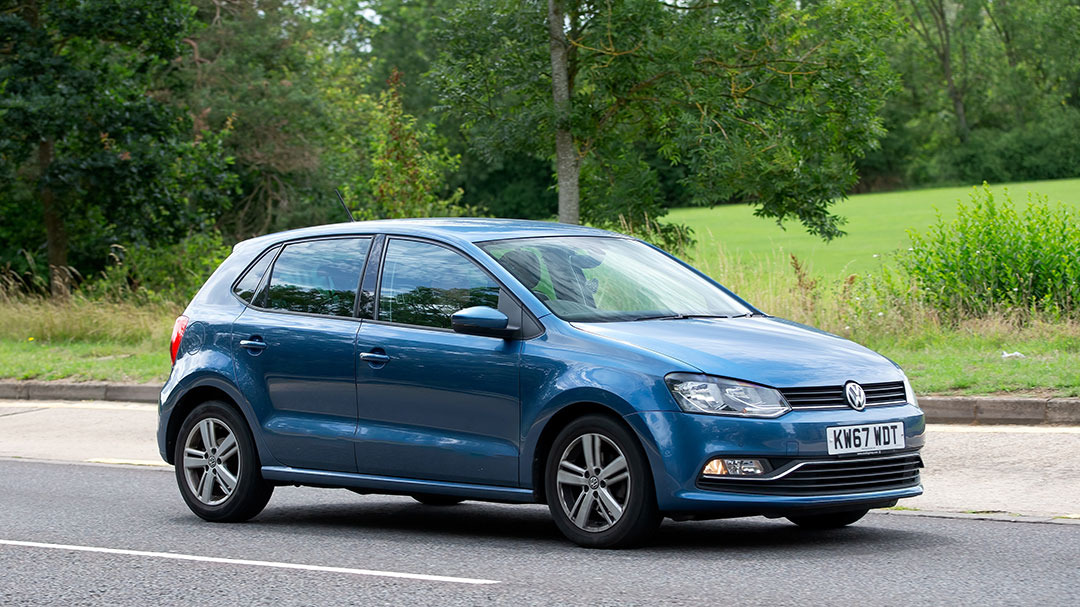
The entry-level 1.0-litre Polo sits in groups 1–3, making it one of the more affordable hatchbacks. With a five-star Euro NCAP rating, it’s a popular first car for 17-year-olds who want practicality without sacrificing build quality.
Toyota Aygo
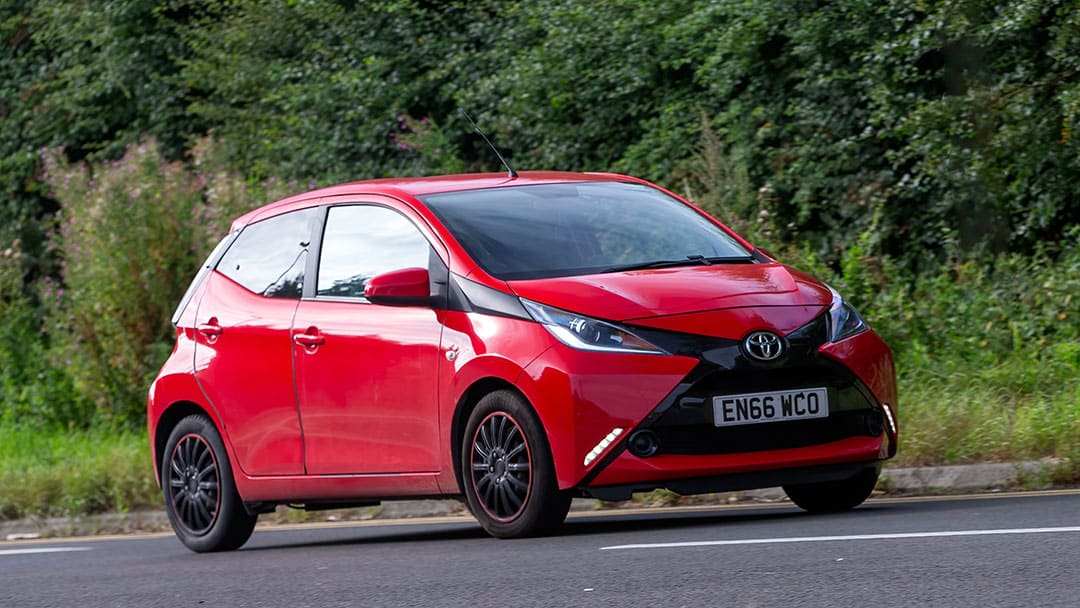
A strong choice in group 1. With average premiums at £1,633, it’s known for low running costs and compact styling. A clear contender in any list of cheapest cars for new drivers in the UK.
Peugeot 108
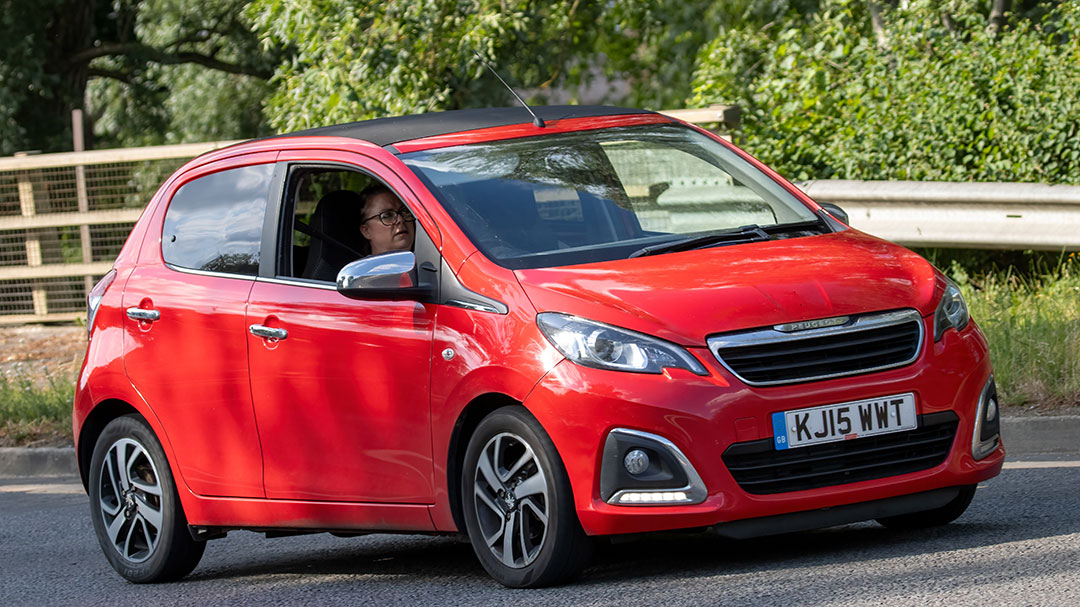
Shares the same platform as the Aygo and Citroën C1. Premiums are often nearly identical, but the 108 holds its own thanks to distinctive styling and competitive running costs.
Kia Picanto
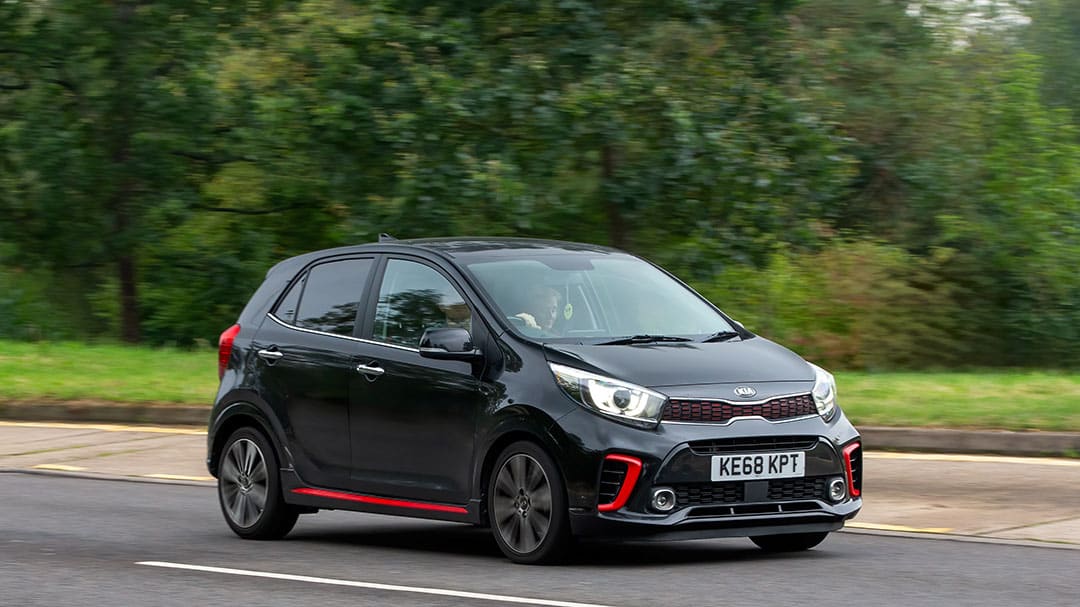
Usually in insurance groups 3–4, slightly higher but still budget-friendly. The seven-year warranty makes it attractive for parents wanting peace of mind on a first car purchase.
Ford KA
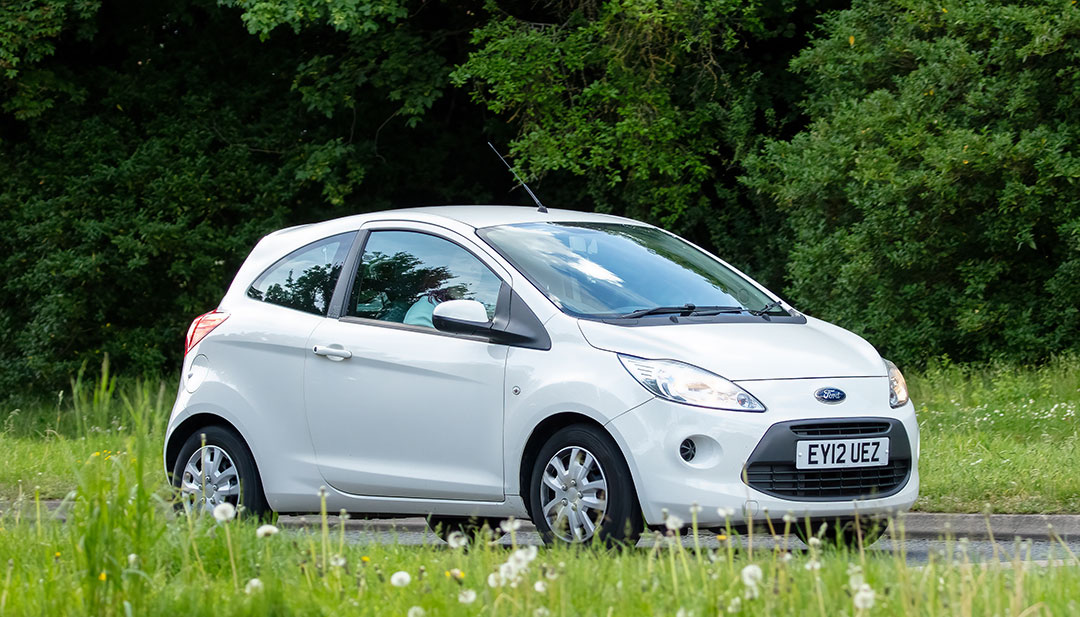
A classic choice for new drivers. Premiums average £1,614, thanks to simple mechanics and low repair bills. It lacks some modern tech, but that’s precisely what keeps costs down.
Citroën C1
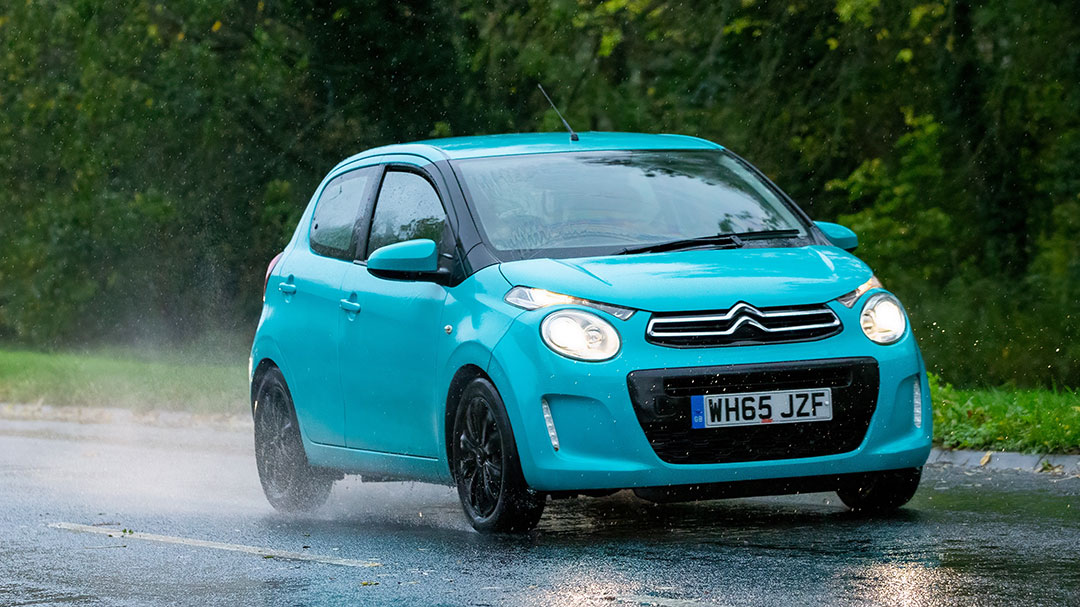
Closely aligned with the Aygo and 108, often sitting in groups 1–3. Light steering and compact proportions make it a natural fit for urban driving tests and early commutes.
Renault Clio
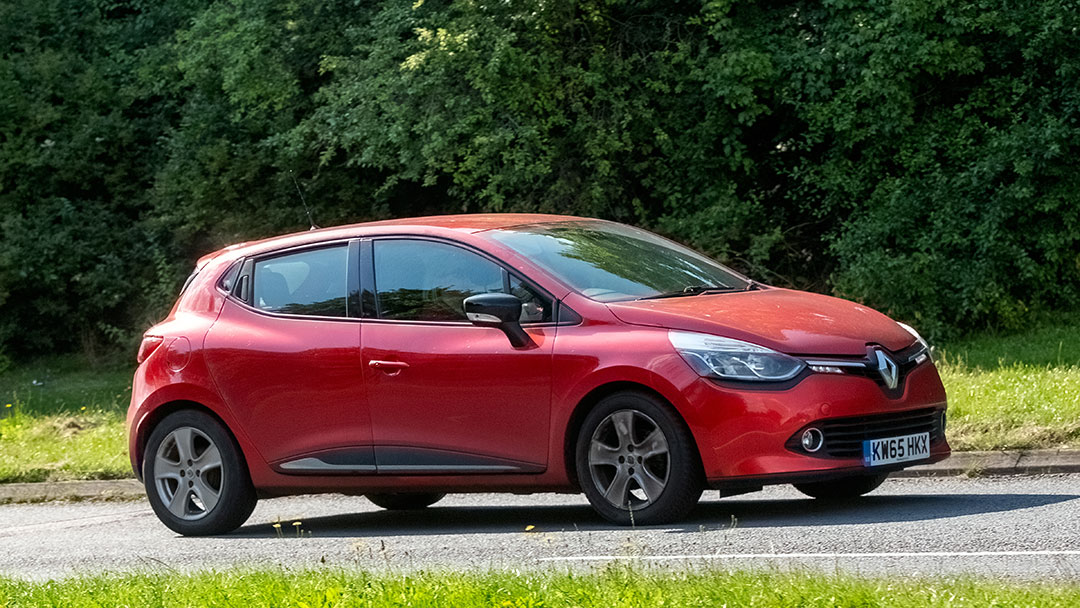
Premiums are slightly higher, usually £1,938, but still competitive for a larger small hatchback. A good option for drivers who want a roomier alternative without leaving the “cheap first car insurance” category.
Skoda Fabia
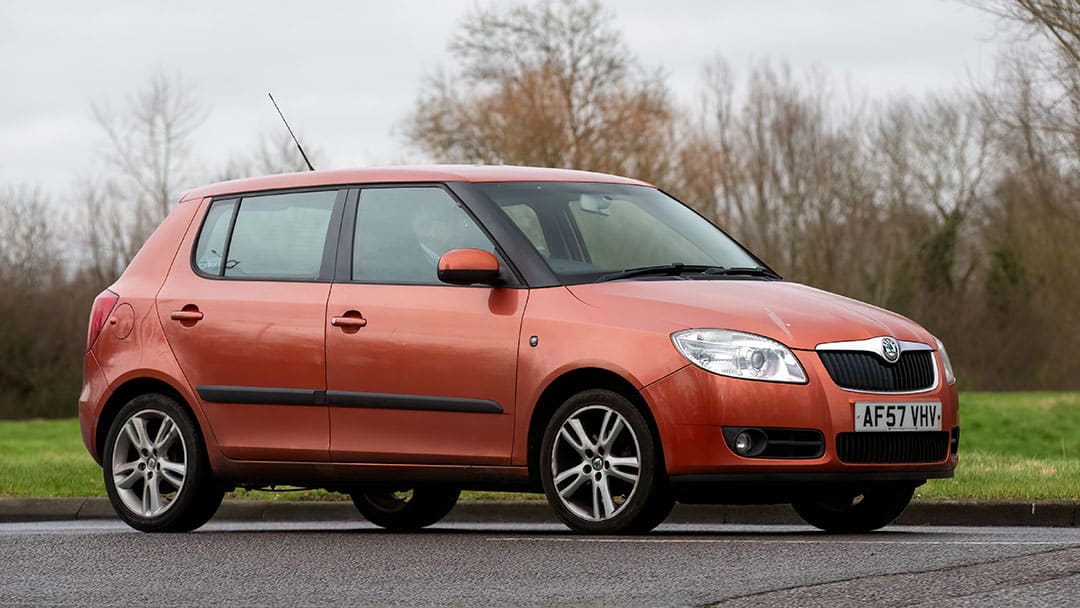
Well-built, practical, and frequently cheaper to insure than the mechanically similar Volkswagen Polo. It often flies under the radar, but for a 17-year-old it can be one of the smartest insurance group 1–3 choices.
Comparison Table: Cheapest First Cars to Insure for 17-Year-Olds (2025, UK)
| Car | Average Annual Premium (£) | Insurance Group |
|---|---|---|
| Fiat 500 | £1,610 | 1–3 |
| Ford KA | £1,614 | 2–3 |
| Toyota Aygo | £1,633 | 1–3 |
| Renault Clio | £1,938 | 2–5 |
| Volkswagen Polo | £2,025 | 1–3 |
Choosing a car in the lower insurance groups is the most reliable way for a 17-year-old to reduce premiums in 2025. The safest bet is a 1.0-litre, entry-level trim of a proven city car. Opt for the SE, S, or Active models over sporty GT or turbocharged editions. That decision alone can save hundreds of pounds a year on young driver car insurance.
Looking to compare car insurance? Get your quote today!
Get QuotesDo specific car features make insurance cheaper for 17-year-olds?
Yes, specific features such as smaller engines, high safety ratings, and unmodified trims make insurance cheaper for 17-year-olds.
Insurers look at more than just the badge on the bonnet. They also weigh up how a car is built, how expensive it is to repair, and how safe it is in real-world crashes. For a new driver, that means certain features actively reduce premiums, while others push costs up.
Smaller engines are a prime example. A 1.0-litre Volkswagen Polo SE will fall into one of the cheapest insurance groups, while the Polo GTI — despite being the same model — sits in a much higher bracket because of its turbocharged engine and performance tuning. The result can be a premium that’s £1,000 higher for a 17-year-old.
Safety technology also counts. Cars fitted with autonomous emergency braking, lane assist, and strong Euro NCAP scores are rewarded with cheaper insurance. Insurers see these features as proven claim-reducers. By contrast, optional extras such as large alloy wheels, body kits, or aftermarket exhausts usually raise the cost because they make the car more expensive to repair and more attractive to thieves.
The cheapest first cars to insure in the UK share three traits: basic entry-level trims, unmodified components, and high safety credentials. Parents looking for peace of mind often steer their children toward these exact specifications, because they’re both practical and insurable.
Features That Lower or Raise Premiums for Young Drivers
| Feature | Effect on Premiums |
|---|---|
| 1.0-litre engine or smaller | Reduces costs significantly |
| Five-star Euro NCAP safety score | Encourages lower premiums |
| Telematics (black box) fitted | Can lower premiums if driving is safe |
| Sporty trims (GTI, ST, RS) | Increases premiums, often sharply |
| Modifications (alloys, exhausts) | Raises premiums, may void cover |
| Advanced safety tech | Helps bring premiums down |
So while two cars might look identical on a forecourt, the insurance bill tells a very different story. For a 17-year-old, avoiding performance versions and sticking to plain trims is often the difference between a manageable £1,600 premium and an eye-watering £2,600 one.
Why are some cars more expensive to insure even if they’re small?
Some small cars cost more to insure because of higher repair costs, sporty trims, theft rates, or weaker safety records.
On paper, you’d expect every small hatchback to sit in the cheapest insurance groups. Yet that’s not always the case. The Ford Fiesta, for example, has long been one of Britain’s best-selling small cars, but premiums for 17-year-olds are often much higher than rivals like the Fiat 500 or Toyota Aygo. The reason isn’t its size, but its popularity with young drivers who modify or drive them more aggressively, leading insurers to load premiums.
Repair costs also matter. A Renault Clio with advanced tech and expensive parts can sit two or three insurance groups above a similar-sized Citroën C1. Even though both are compact hatchbacks, one is far cheaper to put right after an accident.
Safety history plays a role too. Cars with weaker Euro NCAP ratings or poor crash protection cost more to cover because insurers expect higher payouts. Theft rates are another hidden factor. According to the Association of British Insurers (ABI), car theft claims hit their highest level in a decade in 2023, with over 104,000 vehicles reported stolen across the UK. Small hatchbacks like the Fiesta regularly appear in these statistics, which is why premiums are often inflated despite modest engine sizes.
Case Study: Same Driver, Different Cars
Seventeen-year-old driver, clean licence, living in Birmingham:
| Car | Engine & Trim | Insurance Group | Annual Premium (£) |
|---|---|---|---|
| Ford Fiesta Zetec | 1.0-litre, base | 5–7 | £2,350 |
| Fiat 500 Pop | 1.0-litre, base | 1–3 | £1,610 |
| Renault Clio SE | 1.2-litre, mid | 4–6 | £1,938 |
Despite all being small hatchbacks, the premiums swing by more than £700. The Fiesta is more expensive not because of its size, but because insurers price in higher claim risk, repair costs, and theft statistics.
For a 17-year-old choosing their first car, this explains why sticking to entry-level trims in low insurance groups is more important than just “buying small”. Size alone isn’t the guarantee — risk profile is what insurers care about most.
How can a 17-year-old reduce car insurance costs beyond the car choice?
A 17-year-old can reduce car insurance costs by choosing telematics policies, adding a responsible named driver, paying annually, keeping mileage low, and improving vehicle security.
Car choice is only half the story. Once you’ve settled on a small hatchback in the lowest insurance group, there are several proven ways to bring premiums down further. These tactics are especially important for parents footing the bill, since the difference can easily run into hundreds of pounds each year.
One of the most effective methods is telematics. A black box records driving habits such as speed, braking, and time of day. Insurers reward careful driving with lower premiums, and for a 17-year-old this can trim £250–£500 off the annual cost. However, it’s worth noting that late-night driving or harsh acceleration can push premiums back up, so telematics only pays off if driving standards remain consistent.
Adding a parent as a named driver is another common tactic. A young driver with no experience looks risky to an insurer, but a policy that also covers an experienced adult dilutes that risk. The key is honesty: the 17-year-old must remain the main driver, otherwise it’s classed as “fronting”, which is insurance fraud.
Paying annually rather than monthly also helps. Insurers typically charge interest on monthly instalments, adding 10% or more to the total cost. Likewise, keeping annual mileage below 6,000–8,000 miles signals lower exposure to accidents. Parents with a safe driveway or garage can also benefit, as secure parking reduces theft risk and lowers premiums.
Practical cost-saving tactics for 17-year-olds
| Strategy | Typical Saving Potential (£) | Notes |
|---|---|---|
| Telematics (black box) | £250–£500 | Only beneficial if driving behaviour is consistent |
| Add a named driver (parent) | £150–£300 | Must not be the main driver — avoid “fronting” |
| Pay annually | £100–£200 | Avoids monthly interest charges |
| Lower annual mileage | £100–£250 | Declare realistic but modest usage |
| Improve parking security | £50–£150 | Garage/driveway cheaper than on-street in high-crime areas |
For 17-year-olds, the right combination of car and strategy can turn an unaffordable £2,300 premium into something closer to £1,600. Parents who approach it like a cost-saving exercise — checking trims, running quotes before buying, and choosing the right policy structure — can make the difference between financial strain and manageable cover.
Do telematics policies always save money for 17-year-olds?
Telematics policies often save 17-year-olds money, but not always. The discount depends on driving behaviour, mileage patterns, and the insurer’s criteria.
Black box insurance is marketed as the go-to solution for young drivers. It can be — but only if the driver proves themselves consistently safe. A telematics device or smartphone app records speed, acceleration, braking, cornering, and time of day. Drivers who avoid risky behaviour, like speeding or late-night driving, often see premiums fall by £250–£500 in the first year.
The catch is that not every 17-year-old fits the profile insurers reward. Many telematics policies penalise driving after 11pm, harsh braking, or frequent long trips on fast roads. A teenager who works late shifts or regularly drives at night may find themselves paying more under telematics than they would with a standard policy.
Some insurers also cap mileage at levels unsuitable for learners commuting daily. Exceeding those caps can wipe out discounts and add charges. In other words, telematics isn’t a magic bullet — it’s a performance-based contract. For confident, careful drivers with predictable patterns, it’s one of the most powerful cost-saving tools available. But for others, it can be restrictive or even backfire.
Example Premium Comparison (Telematics vs Non-Telematics)
| Driver Profile | Standard Premium (£) | Telematics Premium (£) | Outcome |
|---|---|---|---|
| Careful driver, 4,000 miles, rural | £2,000 | £1,600 | Saves £400 |
| Mixed driver, 6,000 miles, city | £2,100 | £2,050 | Minimal saving (£50) |
| Late-night worker, 7,000 miles, city | £2,200 | £2,400 | Costs £200 more with telematics |
For a 17-year-old, the takeaway is simple: telematics works if you’re consistent, cautious, and don’t need to drive at high-risk times. Before committing, it’s worth comparing both telematics and non-telematics quotes to see which option reflects your lifestyle more accurately.
Why should you compare quotes before buying a car?
You should compare quotes before buying a car because two nearly identical vehicles can have insurance premiums that differ by hundreds of pounds.
Insurance groups are a useful guide, but they don’t tell the full story. A 2018 Volkswagen Polo S 1.0 and a 2018 Polo GTI may look alike, yet for a 17-year-old driver the difference in annual premium could be more than £1,000. The GTI’s higher performance, repair costs, and claim history push it into a riskier category, while the basic S trim keeps costs down.
It isn’t only trim levels that matter. The car’s age, mileage, location, and even colour can influence premiums. Popular cars among thieves, such as certain Ford Fiesta models, attract higher quotes than less targeted rivals. That’s why insurers often price two cars with the same engine and insurance group very differently.
Running a car insurance quote before buying eliminates guesswork. Many parents and young drivers assume a “small car” automatically means cheaper cover, but the real test is how insurers view that exact make, model, and specification. A quick check online can save hundreds of pounds and prevent committing to a car that proves expensive to insure.
Example: same model, different premiums
| Car & Trim | Insurance Group | Annual Premium (£) for a 17-Year-Old |
|---|---|---|
| VW Polo S 1.0 (2018) | 1–3 | £1,950 |
| VW Polo GTI 1.8 (2018) | 15–17 | £3,100 |
The bottom line is simple: before paying for any car, get an insurance quote first. For young drivers, this check can mean the difference between a manageable first car and one that drains the budget every month.
Final thoughts
The cheapest cars to insure for 17-year-olds in 2025 are small, low-powered hatchbacks in the lowest insurance groups, such as the Fiat 500, Hyundai i10, and Toyota Aygo.
Insurance for young drivers will always be expensive, but the right car can make the difference between an affordable first year on the road and a financial headache. Choosing models with 1.0-litre engines, strong Euro NCAP ratings, and unmodified entry-level trims is the safest strategy.
Premiums aren’t dictated by car choice alone, though. Insurers weigh in experience, location, mileage, and behaviour. That’s why tactics like black box insurance, adding a parent as a named driver, or paying annually can reduce costs further. It’s also why comparing quotes before committing to a car is essential — two near-identical hatchbacks can carry premiums that differ by hundreds of pounds.
For parents and 17-year-olds alike, the goal isn’t simply finding the cheapest car to insure, but choosing one that balances affordability, safety, and practicality. With careful planning, a first car can be both a sensible purchase and an insurance-friendly choice.
Frequently Asked Questions (FAQs)
The Fiat 500 and Toyota Aygo are among the cheapest cars to insure for 17-year-olds in 2025, with premiums starting around £1,600.
On average, 17-year-olds pay between £1,600 and £2,200 for annual car insurance, depending on the model, trim, and location.
Not always. While most 1.0-litre cars fall into the lowest insurance groups, trims like GTI or RS editions can cost significantly more.
Yes, adding an experienced parent as a named driver often reduces premiums, but the 17-year-old must remain the main driver to avoid fronting.
Not always. Comprehensive policies can sometimes cost less, as insurers view them as attracting safer drivers.
No. Telematics saves money if the driver is careful, but penalties for night driving or harsh braking can increase costs.
Generally no. Electric cars often sit in higher insurance groups due to expensive repair costs and battery replacement risks.
Aim for cars in insurance groups 1–3, as these are the cheapest categories for 17-year-old drivers.
